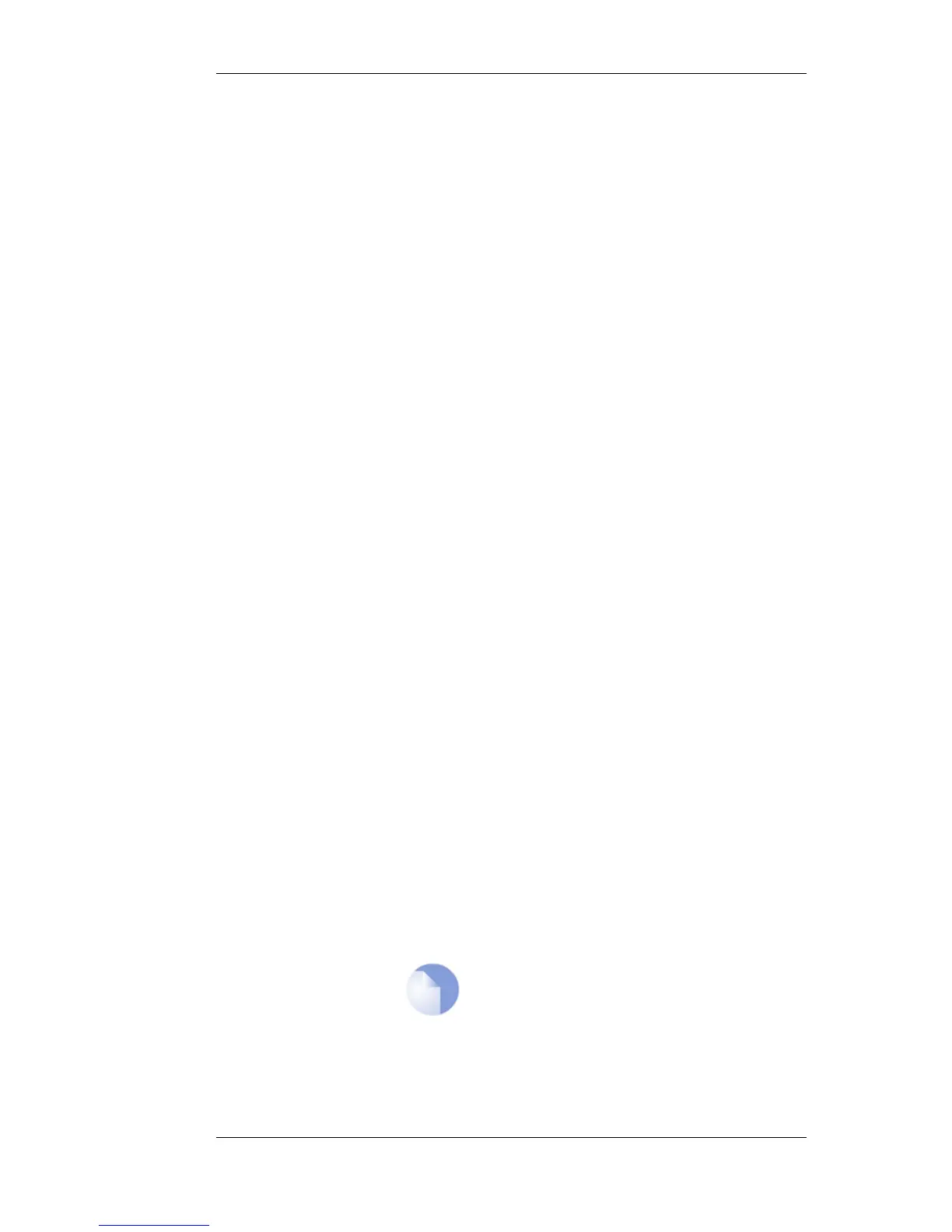Metric
Specifies the metric for this OSPF interface. This represents the "cost" of
sending packets over this interface. This cost is inversely proportional to the
bandwidth of the interface.
Bandwidth
If the metric is not specified, the bandwidth is specified instead. If the
bandwidth is known then this can be specified directly instead of the metric.
Authentication
All OSPF protocol exchanges can be authenticated using a simple password or MD5 cryptographic
hashes.
If Use Default for Router Process is enabled then the values configured in the router process
properties are used. If this is not enabled then the following options are available:
• No authentication.
• Passphrase.
• MD5 Digest.
Advanced
Passive
Unless an interface is being used by the OSPF router process to
connect to nother OSPF router, this option should be enabled. In the
Web Interface the option is called No OSPF routers connected to
this interface.
When enabled, no OSPF traffic will be generated on the interface.
Hello Interval
Specifies the number of seconds between Hello packets sent on the
interface.
Router Dead Interval
If not Hello packets are received from a neighbor within this
interval then that neighbor router will be considered to be out of
operation.
RXMT Interval
Specifies the number of seconds between retransmissions of LSAs
to neighbors on this interface.
InfTrans Delay
Specifies the estimated transmit delay for the interface. This value
represents the maximum time it takes to forward a LSA packet
trough the router.
Wait Interval
Specifies the number of seconds between the interface brought up
and the election of the DR and BDR. This value should be higher
than the hello interval.
Router Priority
Specifies the router priority, a higher number increases this routers
chance of becoming a DR or a BDR. If 0 is specified then this
router will not be eligible in the DR/BDR election.
Note
An HA cluster will always have 0 as router priority,
and can never be used as a DR or BDR.
Sometimes there is a need to include networks into the OSPF routing process, without running
OSPF on the interface connected to that network. This is done by enabling the Passive option: No
4.5.3. OSPF Components Chapter 4. Routing
211

